Grafika-Grafoprint, as the “first card manufacturer in the Balkans”, is based on the outskirts of Zagreb. In its relatively narrow scope of production it offers a deck of traditional Trieste pattern. The cardboard box contains 40 cards measuring 53 x 98 mm and is primarily likely intended for the game briškula – the Croatian variant of the widespread Italian game briscola.
The careful graphic design with a combination of three complementary colours is a conservative solution that corresponds to the historical design. And of course also to the requirements of the user community, which does not like to see any changes in these cases. The basic three-colour scheme is violated only on the ace of coins, where the green colour on the vine leaves is added. This ace also contains the manufacturer’s logo in the place originally intended for the tax stamp. The reverse side pattern is also designed traditionally, in dark blue.
The small crown on the four of coins may indicate the use of Dal Negro cards as a starting model or a main competitor’s product. Otherwise, this is another traditional spot where the manufacturer’s identification is placed. • See the box
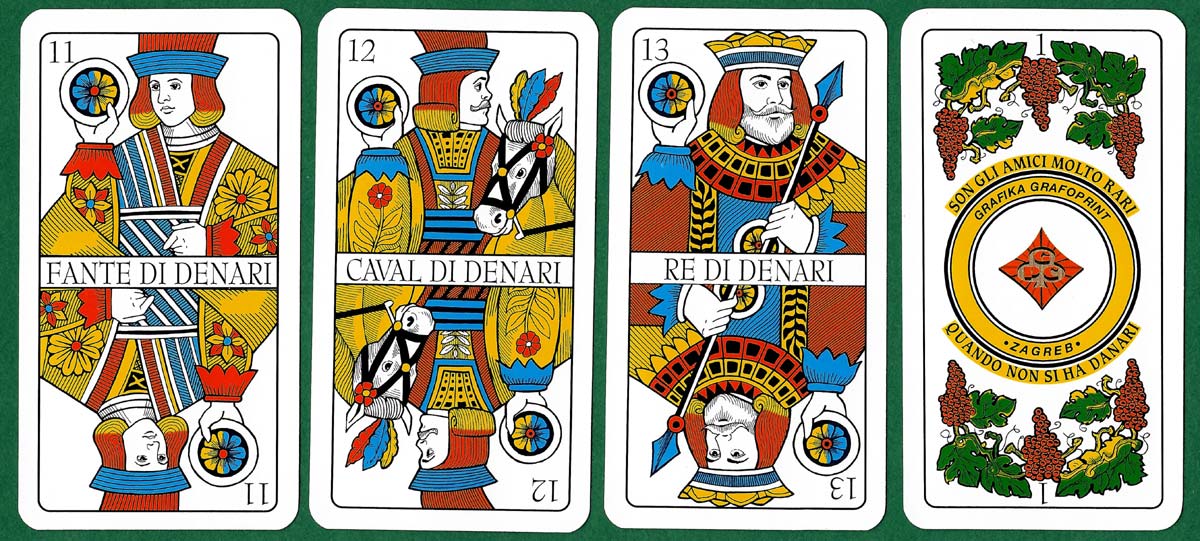
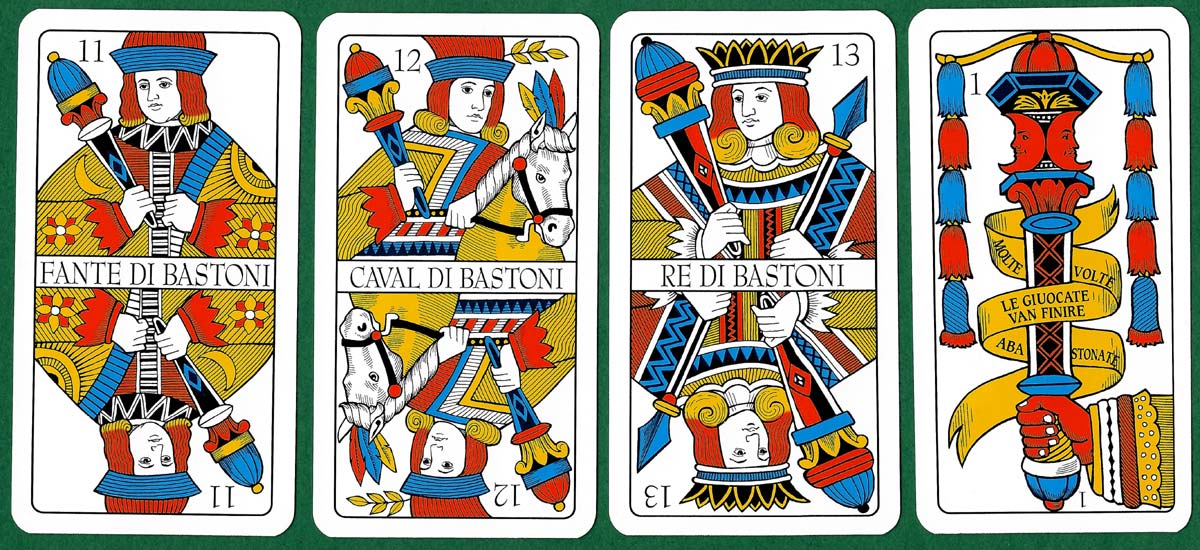
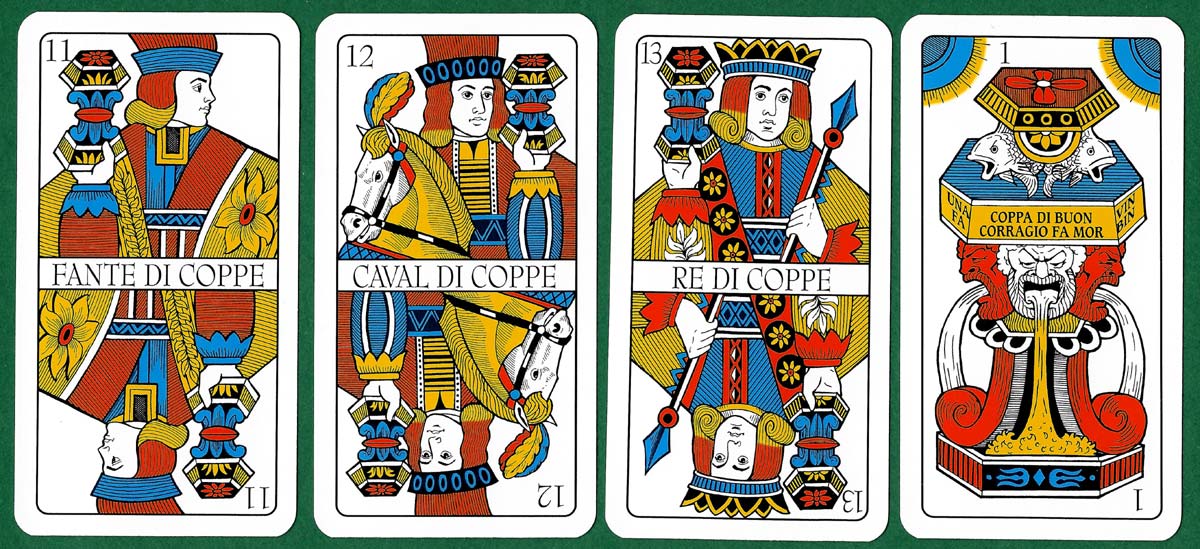
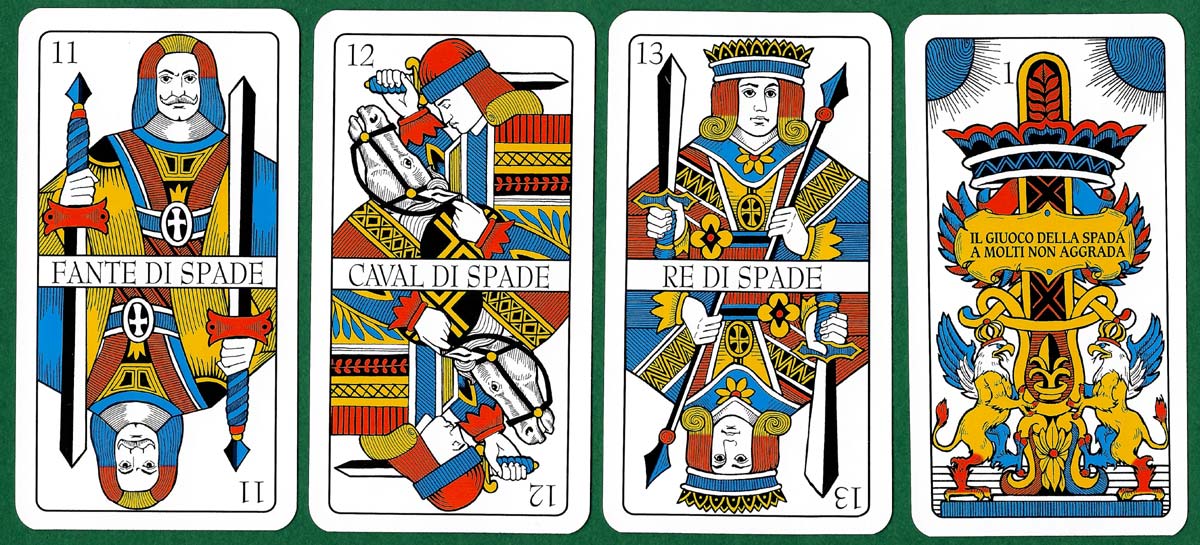
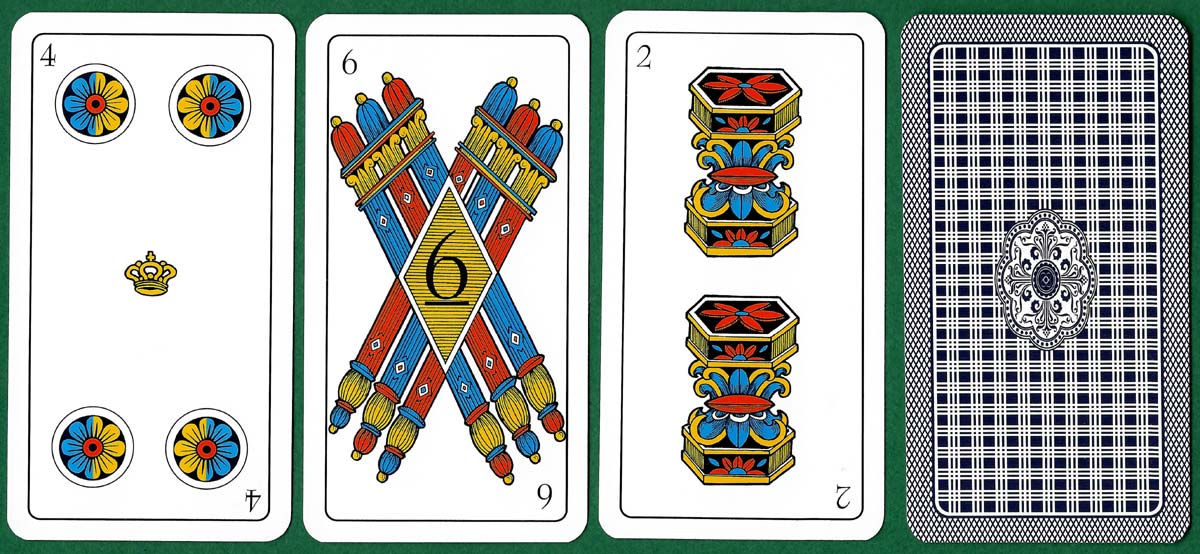
Above: Trieste pattern produced by Grafika-Grafoprint, Croatia, 2000. 40 cards measuring 53 x 98 mm in box.
The Trieste pattern was created around 1850 by modifying the older Venetian one, probably in the local workshop of Giovanni Batista Marcovich. It is registered by The International Playing-Card Society under number 36. The court cards are without exception designed as double-headed and all cards have indices indicating the value (not always located in the upper left corner).
I like the connection between the simplistic colour scheme of yellow-red-blue and the tricolour of the flag of the Austrian Littoral, to which the Imperial Free City of Trieste belonged at the time. This fact could offer interesting political and social associations.
References
WoPC : Playing Cards in Croatia►
IPCS : Trieste pattern ►
Pagat.com : Briškula►
